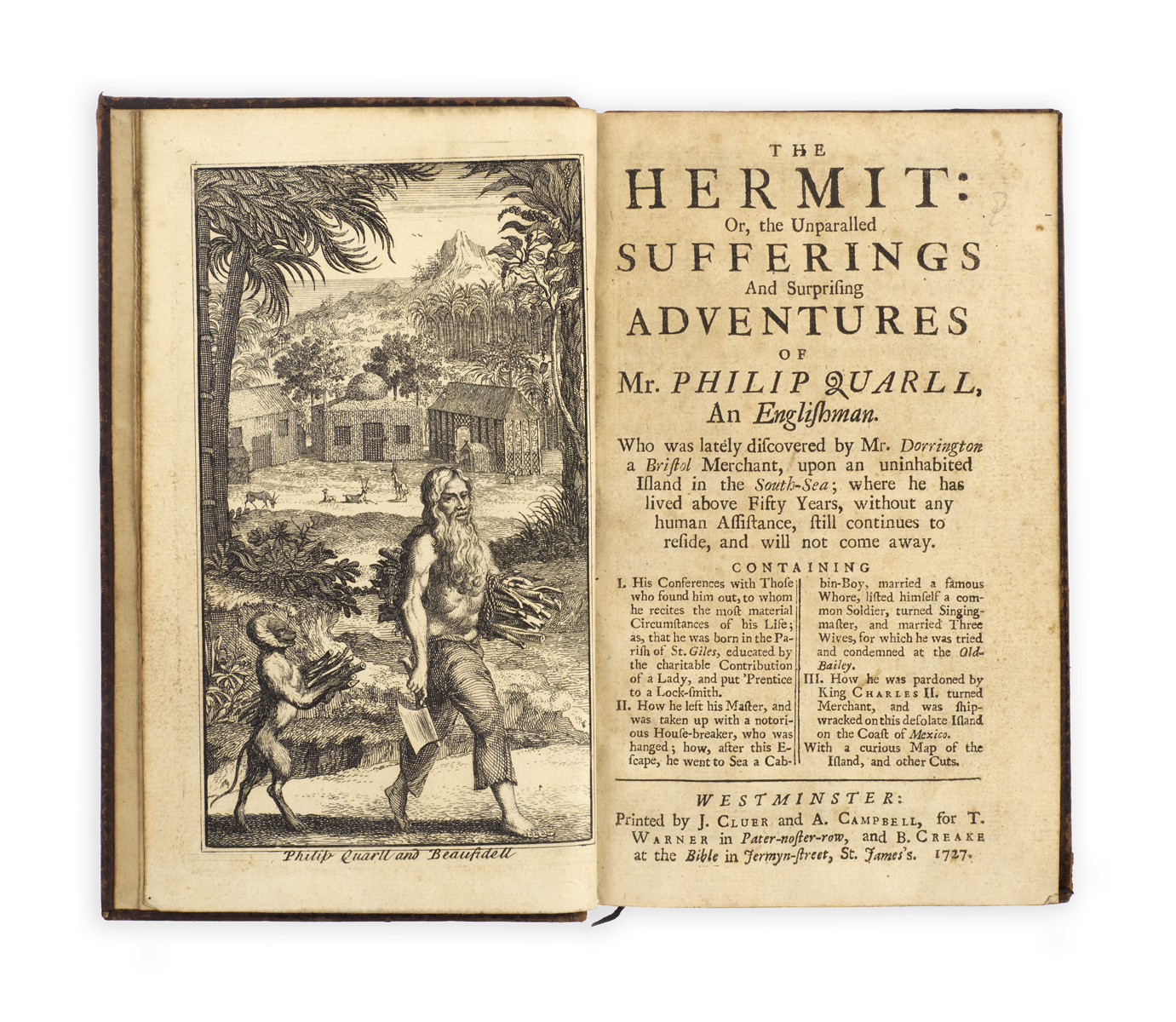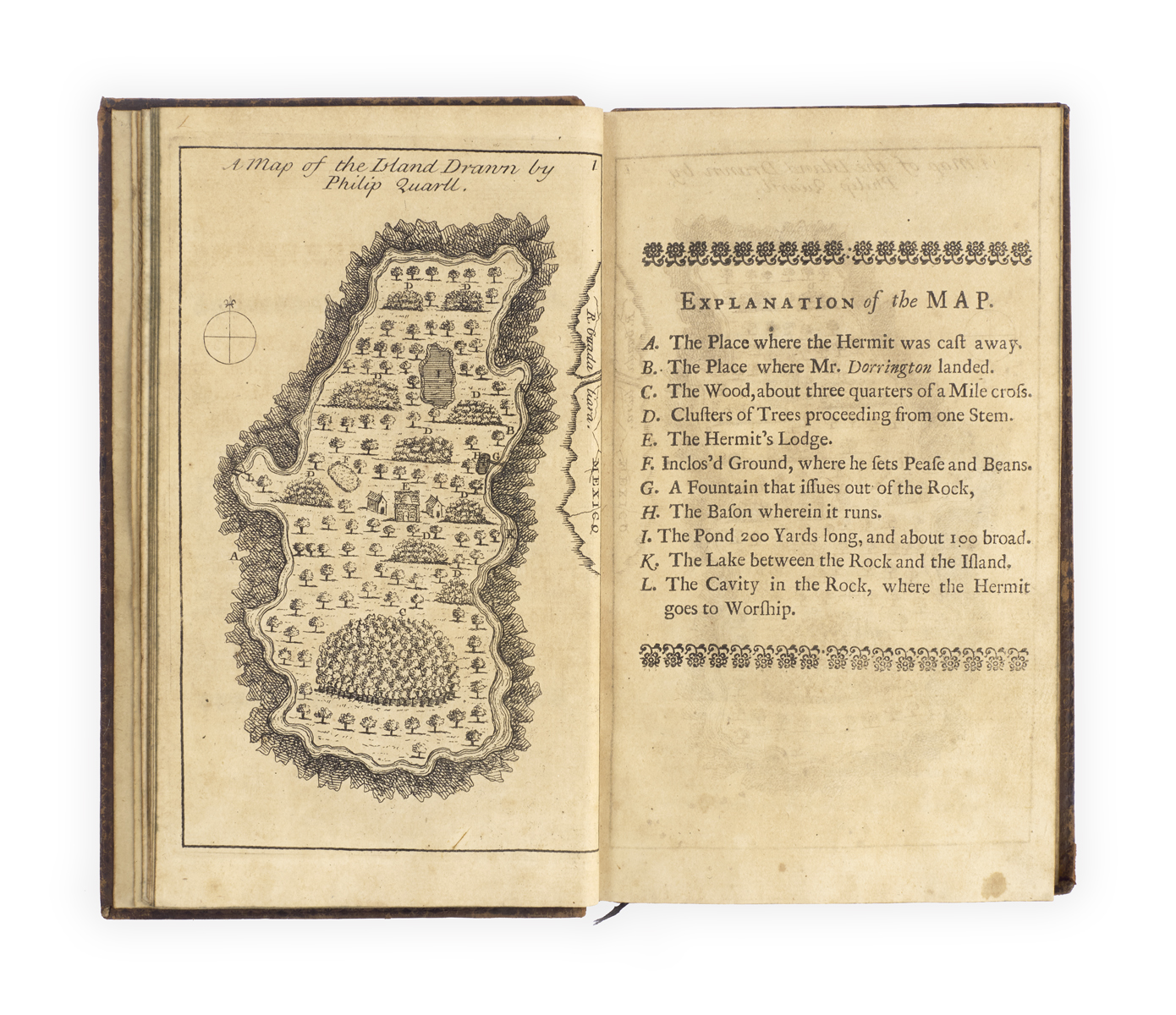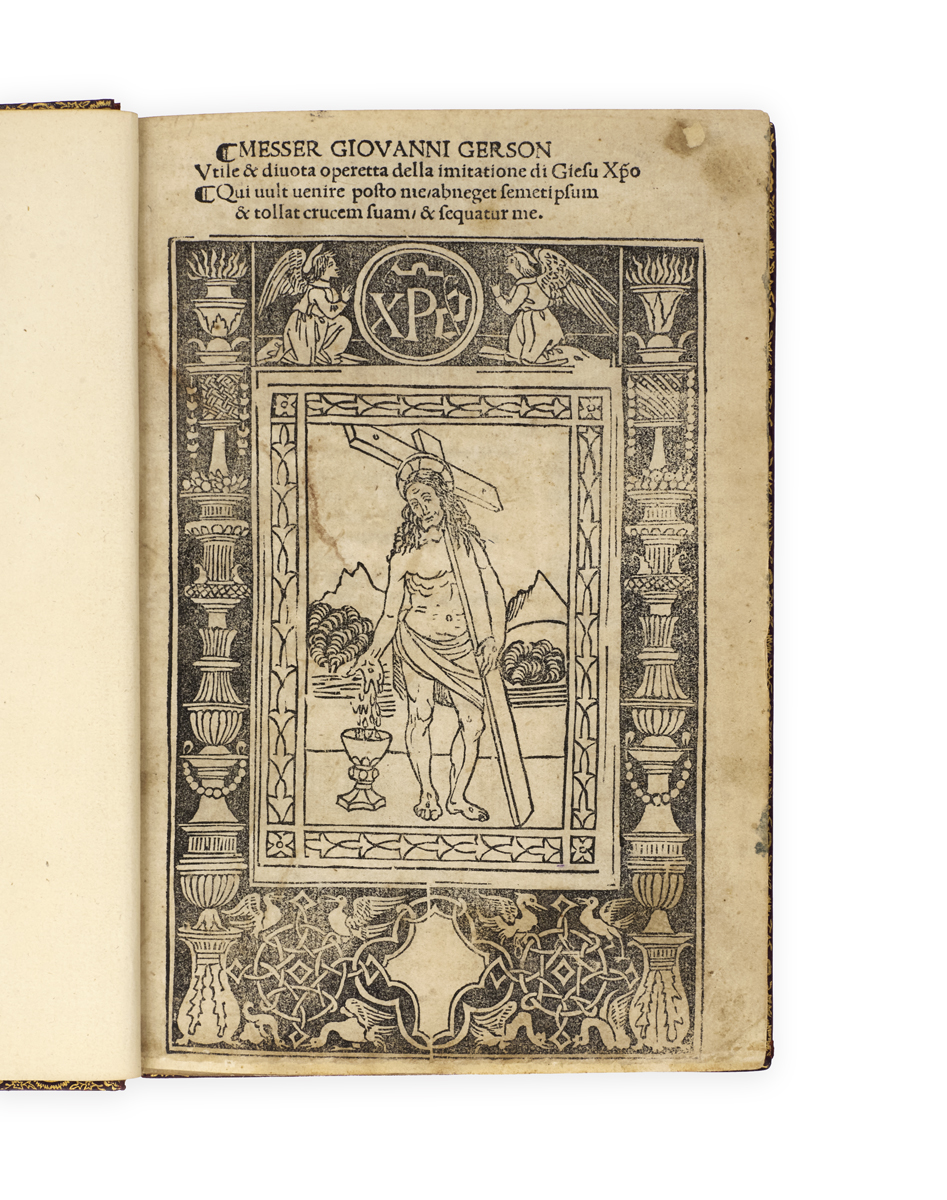

[LONGUEVILLE, Peter, pseud?].
The Hermit: or, the unparalled [sic] Sufferings and surprising Adventures of Mr Philip Quarll, an Englishman. Who was lately discovered … upon an uninhabited Island in the South-Sea; where he has lived above fifty Years, without any human Assistance, still continues to reside, and will not come away … With a curious Map of the Island, and other Cuts. Westminster: Printed by J. Cluer, and A. Campbell, for T.
Warner … and B. Creake … 1727.
8vo, pp. xi, [5], 264, including an engraved frontispiece showing Quarll and his monkey companion Beaufidell (A1), a map of the Island (with a facing letterpress explanation, A7–8), and an engraved plate of a ship in a storm; a very good copy in early nineteenth-century diced calf, tooled in blind, spine a little dry; armorial bookplate of Charles Barclay.

Added to your basket:
The Hermit: or, the unparalled [sic] Sufferings and surprising Adventures of Mr Philip Quarll, an Englishman. Who was lately discovered … upon an uninhabited Island in the South-Sea; where he has lived above fifty Years, without any human Assistance, still continues to reside, and will not come away … With a curious Map of the Island, and other Cuts. Westminster: Printed by J. Cluer, and A. Campbell, for T.
First edition, first issue, ‘an enormously popular work, rivalling Defoe’s Robinson Crusoe, of which it is possibly the best imitation’ (Howgego).
It had French, German and Dutch translations within a year, and many subsequent editions and chapbook printings. One of these was read by the young Coleridge and left a deep impact on his poetic imagination.
The publisher Cluer was wise to his market, and his Preface presents The Hermit, as ‘truth’, against the ‘vulgar stories’ of Robinson Crusoe, Moll Flanders, and Colonel Jack, which are popular among the ‘lower Rank of Readers’, and the ‘Satirical Vein’ of Gulliver’s Travels, ‘an equal Entertainment to the superior Class of Mankind’. If Crusoe is the model for Parts I and III, with their descriptions of Quarll’s discovery by the Bristol merchant Edward Dorrington, of his life on the island, of Dorrington’s return journey, and of Quarll’s shipwreck and first days as a castaway; then Part II harks after the picaresque of Moll Flanders and Colonel Jack. Its protagonist, newly enlisted as a cabin boy, finds himself married to a ‘Drury-lane nymph’, turns singing master, then dispatches his wife to the country. An aside follows her amorous intrigues, while Quarll behaves in a similar vein in London: he ends up married thrice and is consequently condemned in the Old Bailey. Pardoned by Charles II, he becomes a merchant seaman before his shipwreck brings the narrative full circle. ‘For its geographical descriptions The Hermit borrows substantially from William Dampier, and it has been shown by William Bonner in his Captain William Dampier that the island on which Quarll is shipwrecked is identical in its topography to one of the Tres Marias group off the coast of California, located and described by Dampier in his Voyages’ (Howgego).
The Preface here is signed by ‘P. L.’, but there is a single surviving copy of another issue entitled The English Hermit (n.p. 1727, BL only), with a dedication signed by one ‘Peter Longueville’, and a preface in which he notes that the ‘Bookseller who purchased my Copy having in his Preface, made one Mr. Dorington, a Pretended Bristol Merchant … to be the Author of the present history, in Order to Advance the Sale of his Books, this is to Certify that I never knew no such Person’. This makes it clear that the present issue has precedence. Of Longueville himself, nothing certain is known, and it may be another pseudonym.

